Follow these simple rules for a safe hunt
Follow these simple rules for a safe hunt
A lot can go wrong on a driven hunt if you skip out on safety. Follow these simple rules and you will be able to enjoy a safe hunt.
“And please remember, safety first!” – these are probably the most commonly spoken words at the beginning of each driven hunt. Our beloved activity can provide enough of hazards to treat this with respect. When participating in a hunt, you should not only take care of your own safety, but also be careful to not accidentally become a threat to others.
When buying insurance for a hunting trip, you will often find that it is put in the box entitled extreme sports. Could it be as dangerous as bungee jumping, MTB downhill, diving, abseiling, to name a few? Well, it can be if the participants ignore the safety rules. If you lack imagination or are carried away by fantasy and passion you can seriously jeopardize the safety of others and your own.
“A bullet once passed a few centimeters from my head. I would not like to try my luck one more time...”
//YOUR OWN SAFETY//
A driven hunt can follow different scenarios. Not often everything goes according to the plan, due to sudden weather change, lack of communication, misunderstandings, movement of the beaters and dogs, behavior of the game, etc.
As a result of confusion, it may turn out that in the space that seemed safe to shoot, a hunter or a beater will appear suddenly. Sometimes the neighbors will not notice the limits of the shot marked on trees, sometimes the road they are standing on is winding and choosing a safe place to send a bullet is tricky. Sometimes stands on crossing roads are located very close to each other, although the shooters do not know it. There can be many reasons for this, and it is impossible to list all of them. Nothing makes safe behavior easier than knowing where other people are. Nothing makes this knowledge easier than seeing them.
Almost everywhere in Europe nowadays, bright elements of clothing have become a requirement in driven hunts. The thing is that the rules are sometimes not very precise. And some hunters still wear a single orange stripe in the belief that it will be enough. What if it is not? So many times, a neighbor with a bright ribbon on his left arm has completely disappeared from my sight because I was standing on his right side. The cheap, orange stripes on the hat years ago have faded completely and become invisible from more than 30 meters.
Be visible to others. Wear a blaze orange or red (if allowed) hat and vest over your normal hunting clothes if for some reason you do not wish to buy clothes specially designed for driven hunting.
Do not leave your post
Do not leave the post before the drive is finished. This is one of the most basic principles. Every sensible hunter, after taking his or her place, tries to remember the zones in which he or she can safely fire and those where it is not allowed to shoot. Appearing in a place where you should not be, while others are still hunting, poses a serious danger.
When you take your stand, show yourself to your neighbor - wave a hand, make sure he or she can see you. And let it stay that way until the end of drive.
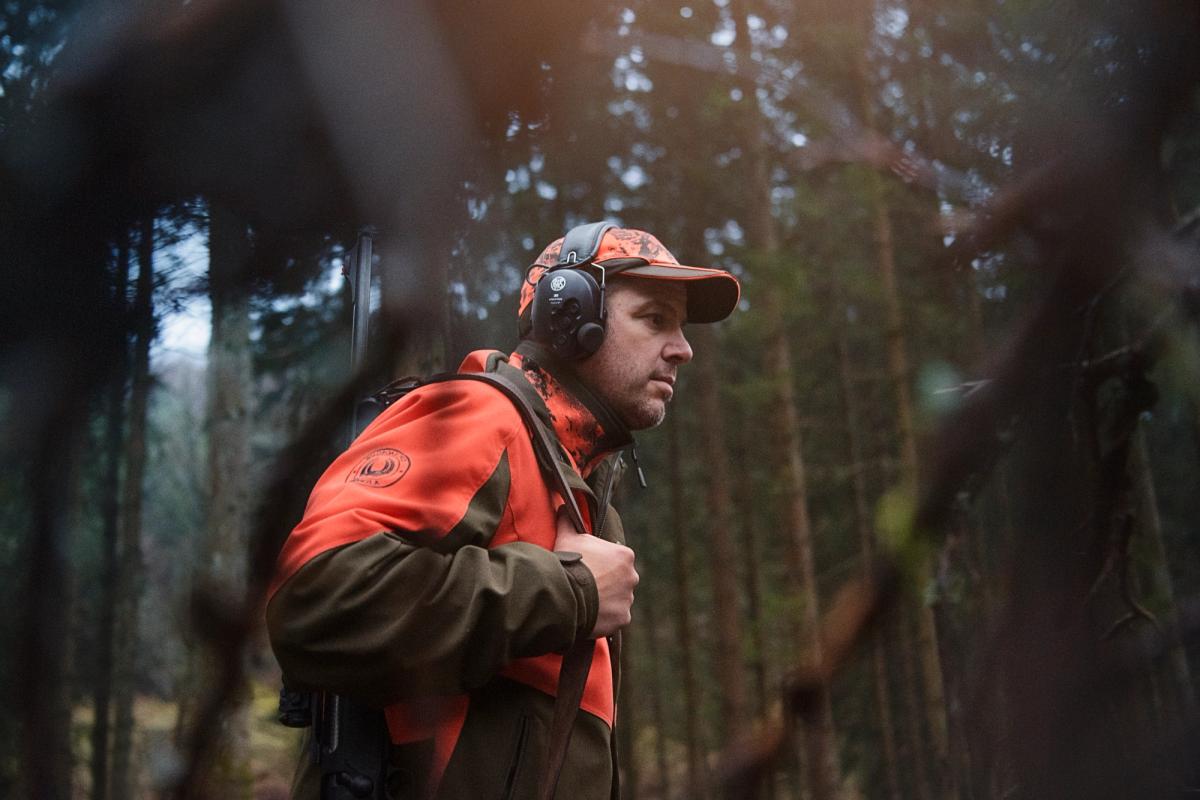
High seats
Sitting on tall hunting constructions can be risky in itself. The wood rots and becomes less durable. The landlord, probably, will have the condition of the structures checked every year, but you never know. Watch out for the rungs of the ladder. Always have a minimum of 3 footholds. Do not lean your whole body against the railings - I have known two cases where a hunter fell and was seriously injured. Dread to think what can happen when you fall with a loaded gun in your hands...
In late Autumn and Winter, plank flooring can be very slippery, especially when lichen and algae appear on it. It is always good to have a mat with you (for example one for sitting down) and put it under your shoes. It is amazing how much support you can get.
Hearing protection
It is surprising how many hunters still disregard hearing protection recommendations. They argue that it is uncomfortable to wear, that it is more difficult to determine the direction from which the game is coming from. This might of course be true, but the same people sooner or later show the habit of leaning their right ear towards the interlocutor, because they cannot hear much with their left ear.
This is not a joke. The protection against noise offers another advantage that is rarely spoken of - it protects against the shock that the body experiences during the shot. By having earmuffs on, you will notice the game's reaction better and be able to fire a second shot faster if needed.
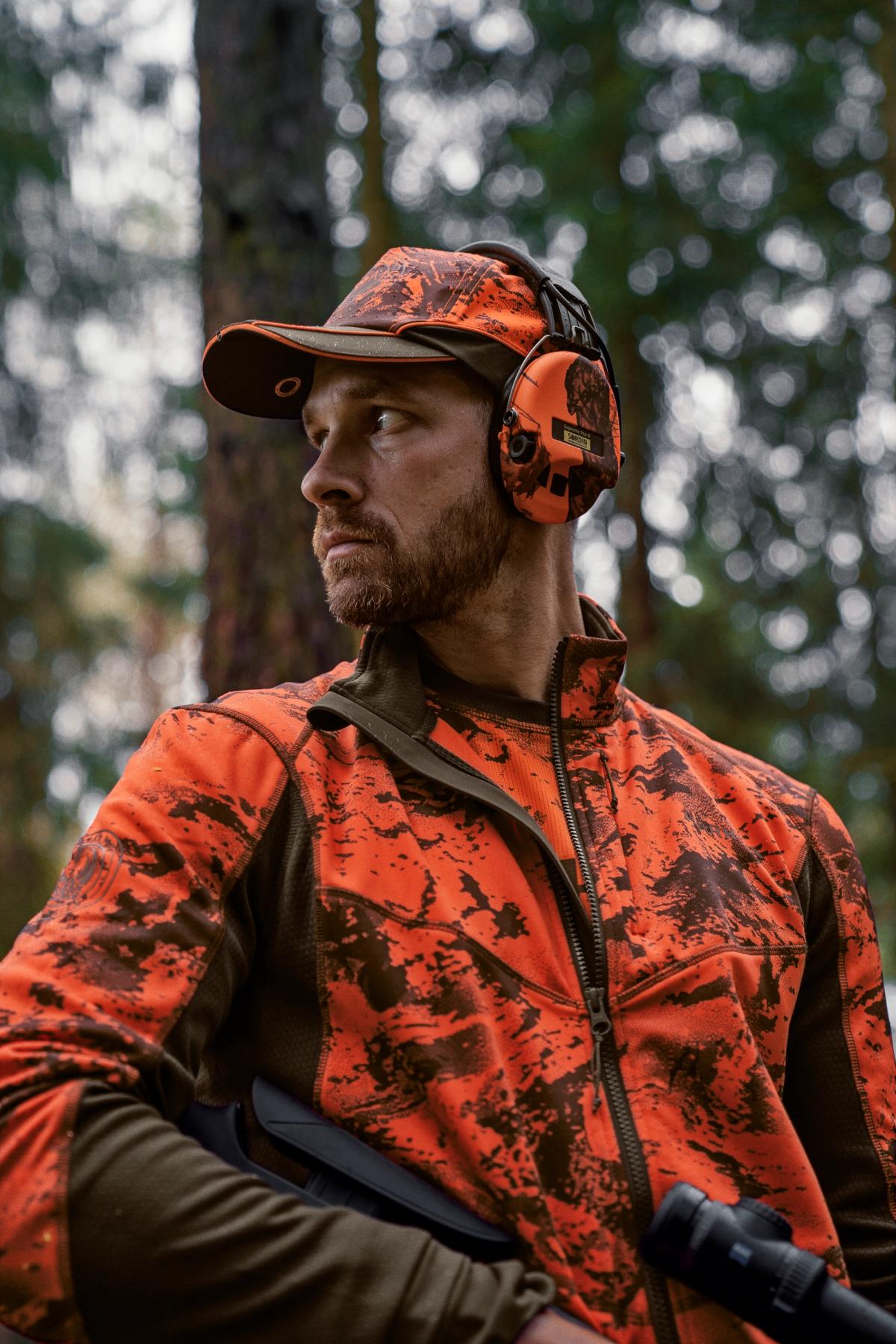
The charges
The injured game does not want to be found and often will not give up without a fight. This applies especially to wild boars, but not only - I know of a case in which a hunter suffered a lung perforation because of a red deer stag attack. Even small wild boars - the frishlings - will charge if pressed, brave little things. Do not underestimate them. Leave the blood tracking to the specialists, and if there are none, be very careful. Especially when the woods are getting thick.
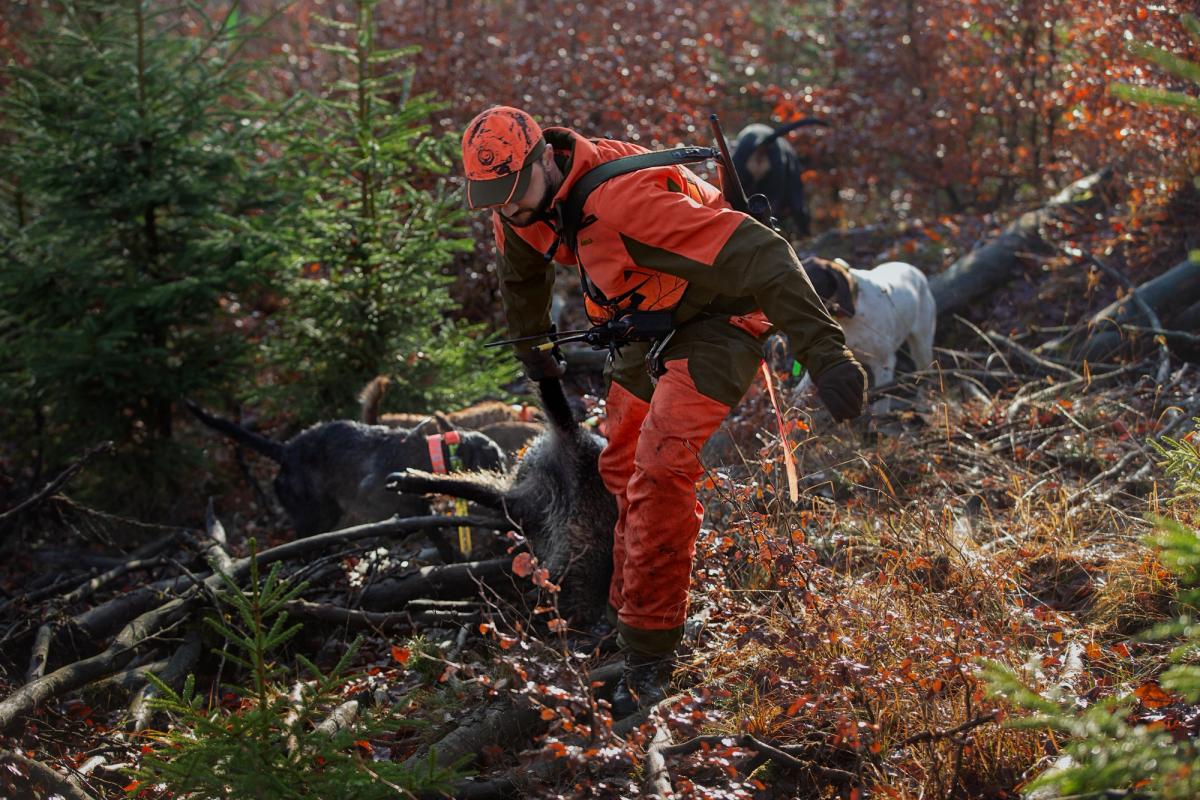
Muzzle clogged
Some hunters like to keep the barrel down. It is safe if you are careful when bending down. If snow or mud gets inside, the pressure may surge when firing the shot, causing the weapon to burst. If you like carrying weapons like this, use a muzzle protector. You can buy a fancy one made of leather, or - if your barrel crown allows it - a special silicone insert, put like a plug into the muzzle. It is safe, the gases will push it out without any problem.
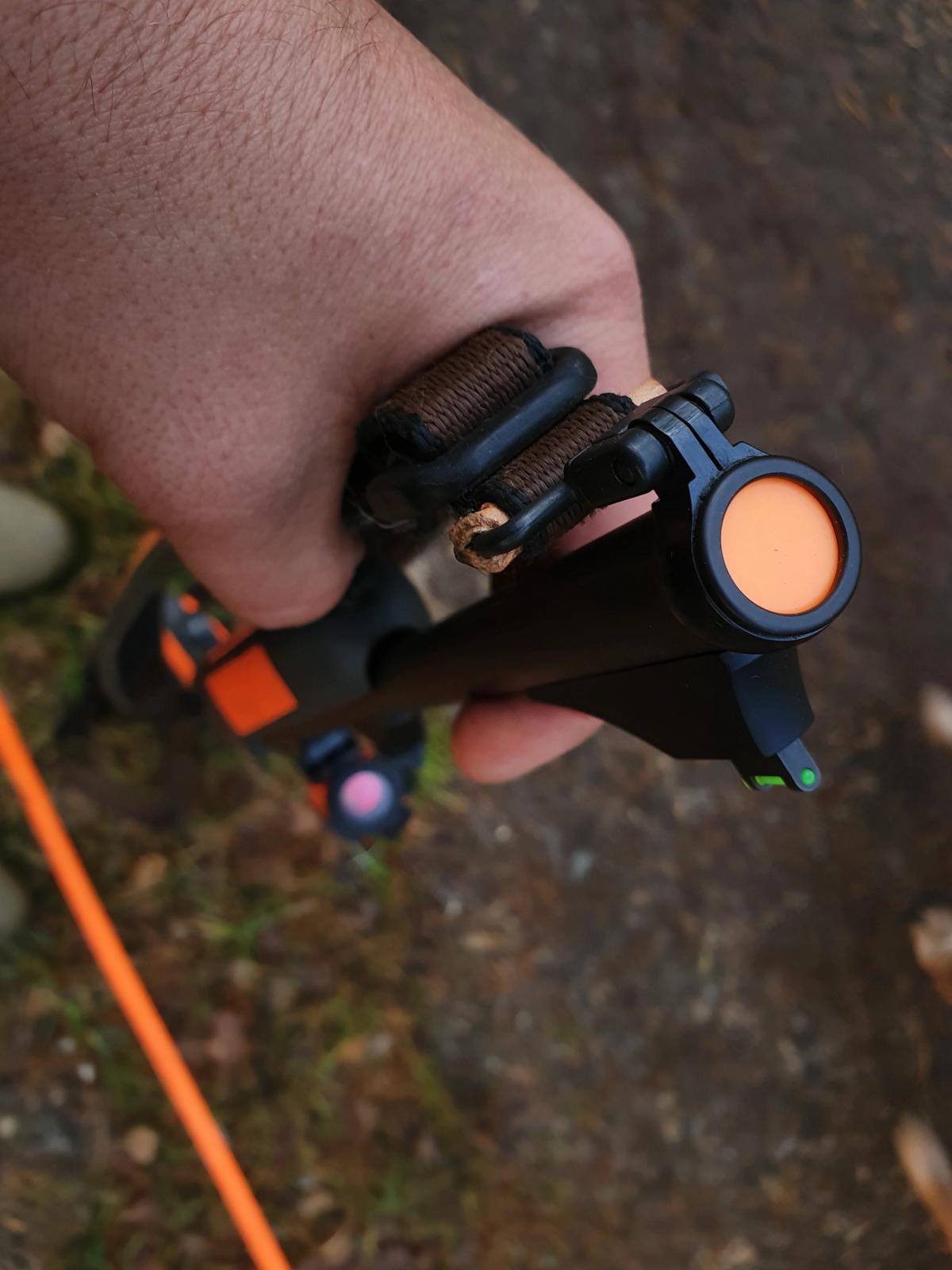
The knife
A hunter without a knife is naked. Take care of your blade - keep it sharp and safely hidden. A blunt tool requires more force and handling it can easily get out of control. Take your time when gutting, use your knife with precision and without haste. Your friends will wait. If you accidentally get stuck, carefully disinfect the wound - even inconspicuous cuts heal hopelessly if foreign protein appears in them. Have a few plasters and a bandage in your hunting bag. Just in case.
The safety of others
If you decide to take a shot, be sure the bullet will stop on firm ground. Do not shoot animals on top of hills. You do not know what is on the other side or how far the bullet can go. Do not take chances, they are not worth it. A better opportunity will present itself eventually.
Shooting into the drive
Shooting into the drive is not always allowed, especially when the hunters are positioned on the ground. Sometimes the restriction is only lifted for wild boar and foxes, but it is valid for deer that move by jumping and the target is above the ground.
Never shoot far inside. There is usually a limit - find out how much it is. These restrictions have come about for a good reason. Never decide to take this type of shot when you already see beaters.
Do not shoot in the hunters’ line
In Poland, it is forbidden to shoot in such a way that the bullet would go closer than 10 meters from the closest neighbor. It is a shockingly gentle approach in my opinion. The rule was created long ago when hunters used mostly shotguns and stood close together. Imagine what 10 meters means when the distance to the closest neighbor is 200 meters! It's practically like a shot at the neighbor himself ...
Keep a safe angle. You do not know where a ricochet can end. A friend of mine miraculously survived such a shot. Never swing across the line of hunters, it is better to mount the gun when the game is on the other side of the road.
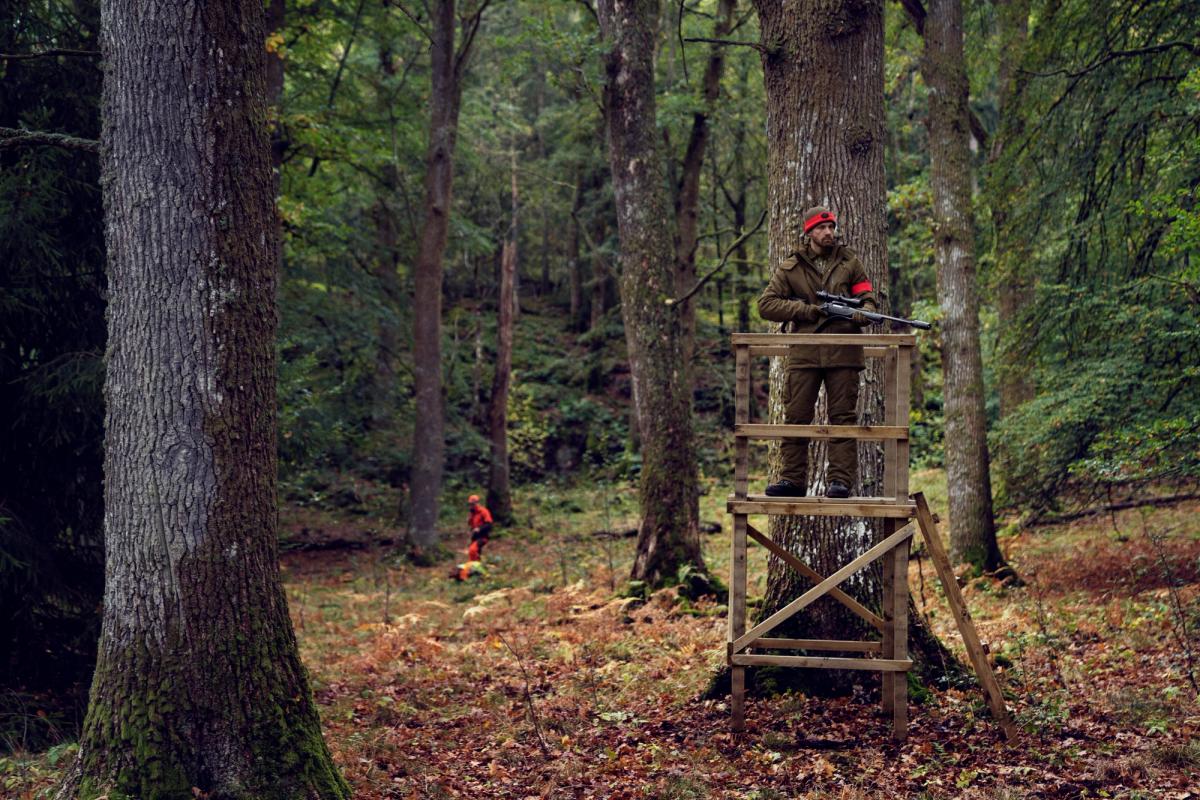
Know where your neighbors are
You will almost certainly know where the hunter who was given the previous post is sitting. However, pay attention to where the next hunter is. Sometimes the roads are winding, sometimes the sites are covered with branches. Sometimes they are not visible from above, but the visibility is OK from “downstairs”. Take a good look before even climbing the ladder. Listen carefully to the leader - it may turn out that somewhere in close proximity there is another stand you may not have noticed.
Set trigger
Many European guns possess a set trigger, a mechanism reducing the resistance to match standards. This might be very useful or pleasant when precision shooting is required, but it could be very dangerous in dynamic situations. If the trigger feels too hard, give it to your gunsmith to check. But almost always the best recipe for a hard trigger is training. I constantly see hunters who prefer to choose a convenient solution - not one that requires effort from them. And then, unfortunately, the shot occurs at a random moment.
Maintain a safety routine
Do not leave your gun unattended. Only load it after taking your position. Do not shoot until the neighbors have taken their positions. Unload your gun before getting off the high seat. Remove the magazine from the gun, move the bolt back to the rear position or break the gun if you carry a double-rifle or a combination gun. Let your colleagues know you're a safe guy.
I know of cases where, as a result of unforeseen events and the neglect of this simple routine, a tragedy almost happened. I learned this lesson the hard way - a bullet passed a few centimeters from my head. I would not like to try my luck one more time...
Common sense
Someone wise said that the most important safety feature of the gun is located between the ears of its operator. It is impossible to define all the possible situations that may arise during the hunt. Use your imagination and common sense. Be responsible for your actions and expect the same from your comrades. Only then will hunting be a pleasure and safe use of the gifts of nature, and not just one more element on the ever-expanding list of extreme sports.
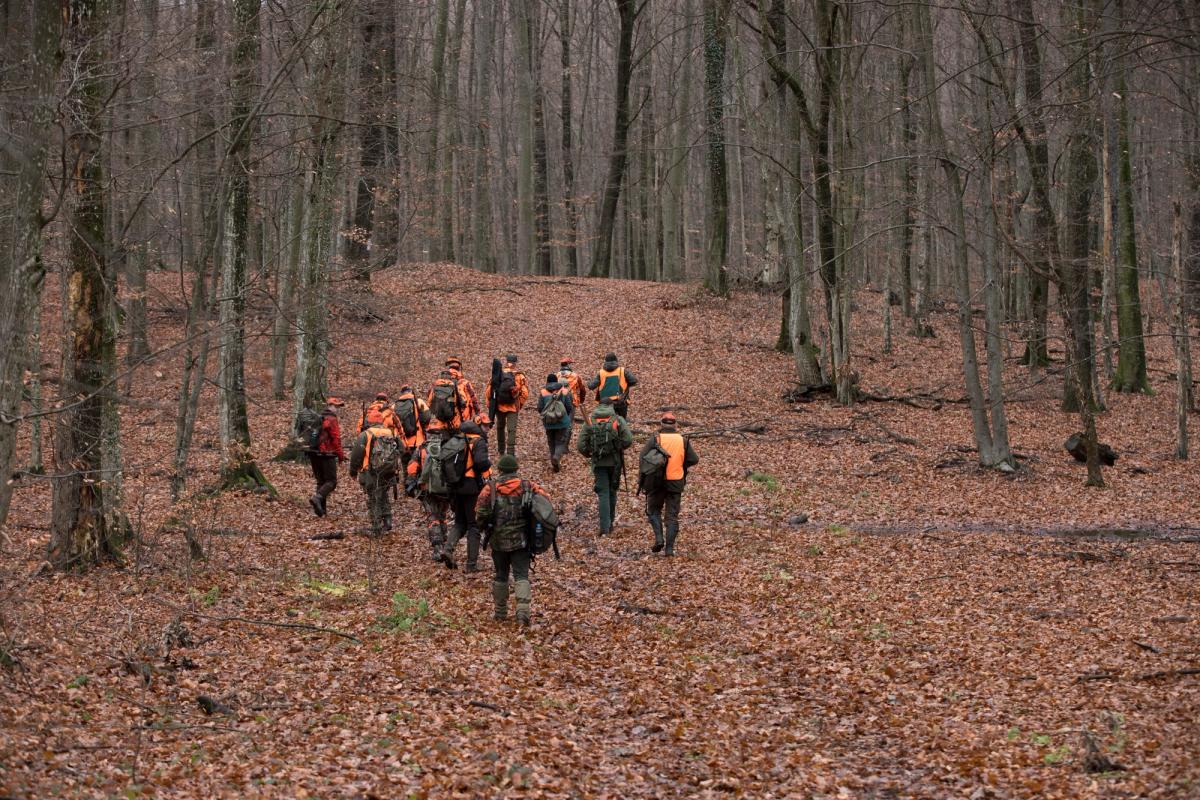
// Written in coporation with Lukasz Dzierzanowski, who is an author, hunter, blood tracker and gun enthusiast from Poland. When not hunting, he teaches Computer Engineering at a technical university in his hometown of Opole. //